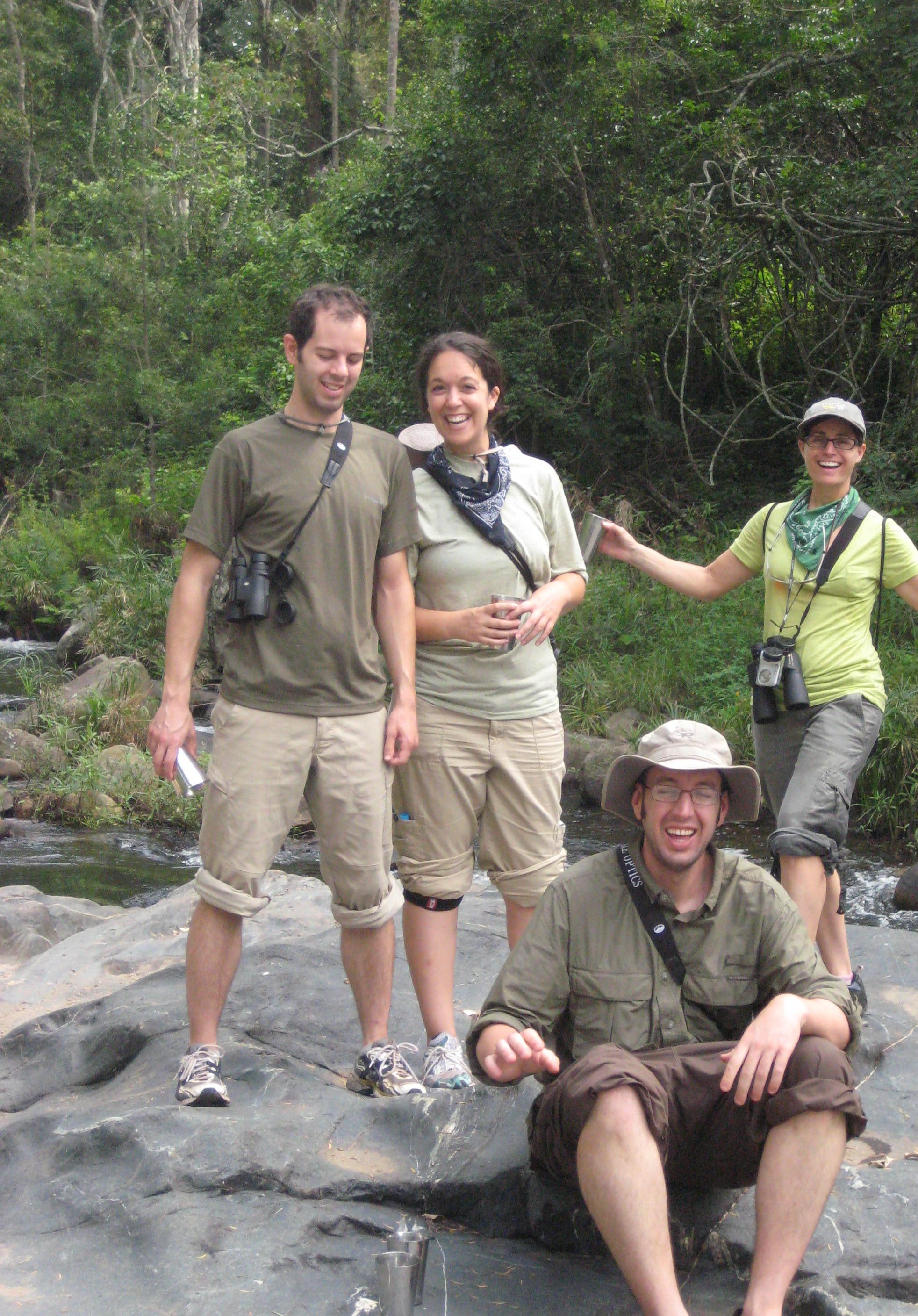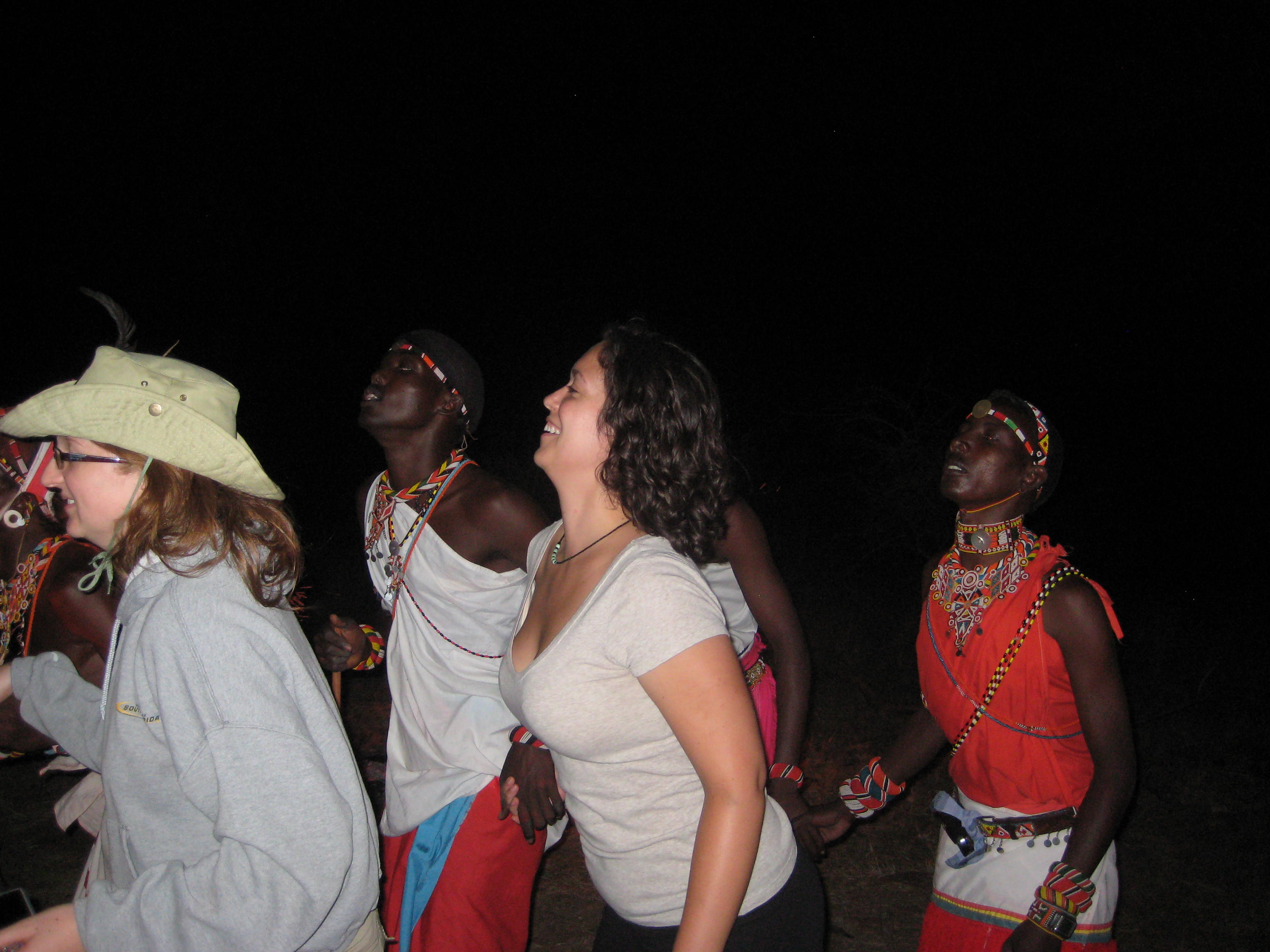
There is always tension on an African foot safari, and especially here in East Africa where the art isn’t as developed as in the south. But I felt confident with the camp manager, Patrick Reynolds, in the lead with his rifle, and Samburu askari both in the front and back with spears.
We had heard lion in the night, and had already seen evidence of buffalo and elephant on the paths the afternoon before.
The rains have been so heavy that many of the streams have become rivers and many areas that were dry have streams. By the end of the safari we were all pretty wet as a result of traversing quite a few. But the day was warm and the sun bright, and spirits were not any way depressed.
The high forests of croton and podyapacrus were spectacular. It seemed there was a Hartlaub’s turaco on every one. Giant Ficus, much larger than I remember seeing in the Aberdare and more similar to what I’ve seen in Manyara, were common.
Patrick has been guiding safari walks for decades, beginning in a remote part of Tsavo East. We discovered very quickly he has a passion for insects, and by the end of the trip we had seen some spectacular spiders, learned all about termites and found a wingless wasp.
John and his two sons are geneticists-cum-chemists and we had quite a long discussion of the web produced by the brilliant golden orb spider, apparently the strongest web in the world. We found quite a few different ones, and we all tested the strength with our fingers and I must admit it was unbelievable.
We stopped at several streams to rest and drink and each area seemed more beautiful than the next. One of the real treats of an East African safari is how many incredibly diverse habitats exist in a relatively small area.
Finally we found fresh scat from the lion, and the Samburu trackers were ordered up front as we maneuvered through some very high grass. But alas, no animals were seen, until towards the end of the walk…
There not twelve feet in front of trackers was a 6-foot long black-necked forest spitting cobra, serpentined with its head up challenging us. These cobras are deadly, and it wasn’t going to move out of the center of the path.
Just a few dead branches thrown at it, though, made it scurry away.
Shortly thereafter we were back in camp after a grand 4 hours in the magical forest. After a late lunch, there was no doubt what everyone wanted to do in the afternoon: nap!
